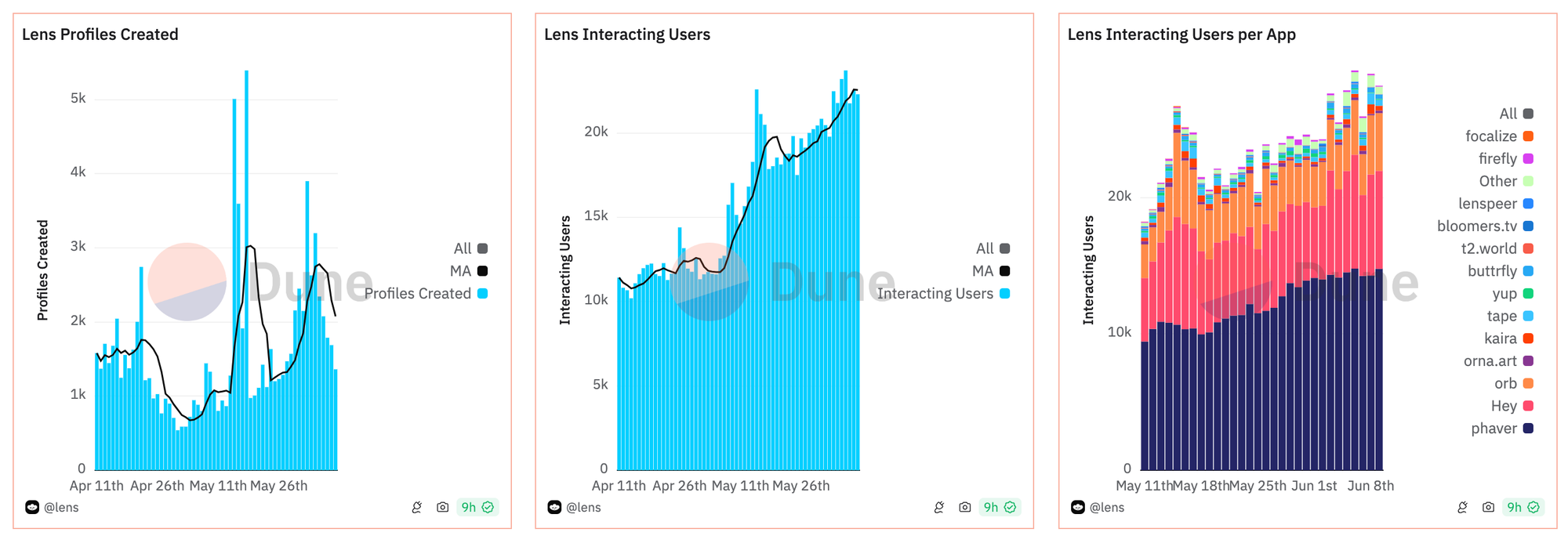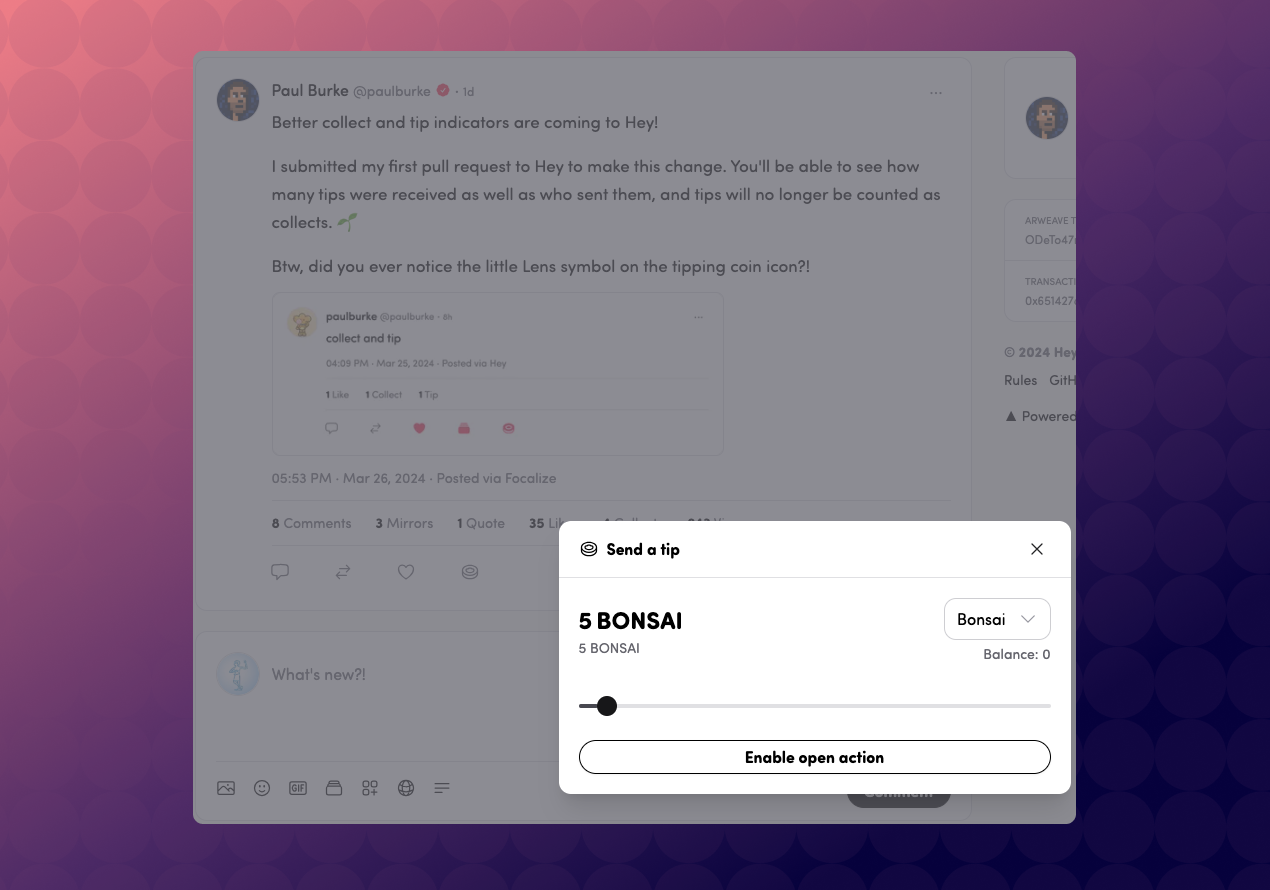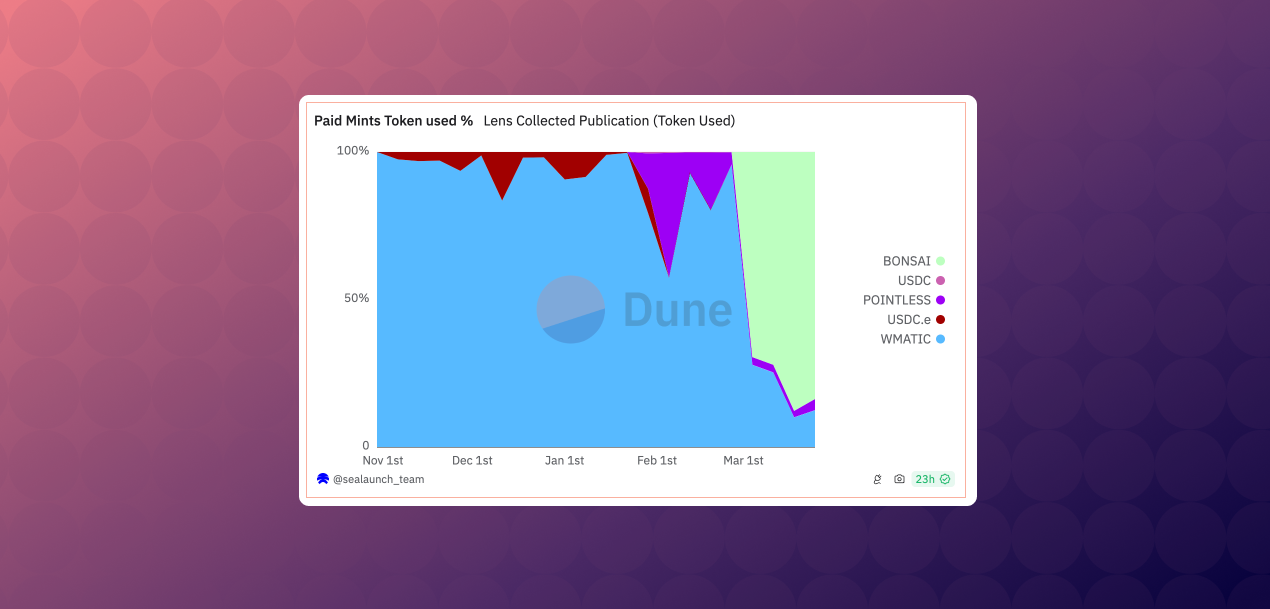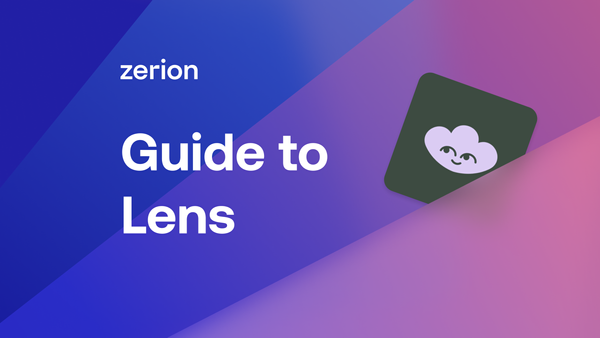Web3 social is taking off!
We recently explored Farcaster, the Web3 social protocol developed by Dan Romero and Varun Srinivasan, both of whom are former Coinbase employees. Now, we'll delve into the current dynamics of the Lens ecosystem. Considered by many as the second most pivotal social media network within Web3, our aim is to bring you up to date with the ecosystem's current state and its future trajectory.
The Lens ecosystem has now reached an interesting point in its history. With multiple VC-backed clients, a community of builders and creators that has been slowly consolidating, and its own set of tokens to make value flow through the platform. Let’s go through each of these together.
The origins of Lens at a glance
Launched in February 2022 by the team behind Aave, Lens introduced a paradigm deeply rooted in the on-chain ethos of the DeFi world. The Lens protocol released a decentralized social graph that integrates user profiles, follows, and publications seamlessly with the blockchain. It would allow developers and creators to build permissionlessly on top of it, setting Lens apart as a pioneering Web3 social protocol amidst other notable entities like Farcaster, Deso, and Cyberconnect.
One of the most notable features of this design is its capacity to embed on-chain logic within social media posts, such as allowing the collection of a creator’s post exclusively by users possessing specific NFTs.
Lens growth over time
Over 2022 and 2023, Lens rapidly emerged as the top social media protocol and network built on the Polygon Proof of Stake network.
Until Q1 of 2024, signing up for Lens remained permission-based, allowing only manually invited individuals to create user profiles and engage with the network. Despite these limitations, Lens experienced high growth, attracting a diverse group of creators, farmers, and Web3 natives.
Activity within the Lens ecosystem slowed down throughout 2023, until a resurgence in Web3 social media interest and the rise of Farcaster sparked a shift to permissionless access in February 2024. This decision was initiated by a proposal from a Lens community member made through the Lens Improvement Proposal process that we’ll cover later in this article.
To give you an order of magnitude of Lens’ size compared to Farcaster, today Lens protocol counts over 22,000 daily active users against 25-30k for Farcaster, its closest competitor.

Lens clients
Let’s now have a look at three of the main Lens clients.
Orb
Orb is widely regarded for offering the best user experience among the Lens ecosystem's clients, especially following the release of Orb V2, which was met with positive community feedback. While in early phases of development, It feels like Twitter meets Instagram, focusing on both textual and visual content which makes it a versatile platform for users.
One of the big highlights is the ability for Orb users to create clubs around the topics they’re most interested in, similar to Farcaster’s channels feature. You can learn more in our guide to Orb.
You can also join Zerion's exclusive NFT-gated club on Orb:
- Install Zerion Wallet
- In the wallet, mint Zerion DNA, the free NFT
- Go to the club in Orb
Hey.xyz
Originally known as Lenster, the project rebranded to Hey and launched its new website, hey.xyz, on September 29, 2023. It is one of the oldest clients built on top of Lens. The project started during a hackathon and it is still being worked on and improved by its independent developer, Yoginth.
At this point, you can use Hey to leverage many features of Lens protocol, like collecting, minting, and tipping posts directly in the Hey feed. Hey also launched three creator licenses natively for collectible content that let creators choose various ways to fully own the things they post on the platform.
Phaver
Phaver is another Lens client with significant activity.
Like Orb clubs, Phaver has its own set of communities that can be token-gated.
The platform encourages user engagement through a points system, rewarding interaction within the app. Recently, Phaver introduced new onboarding tasks, enabling users to earn points as they familiarize themselves with the platform's functionalities.
Finally, Phaver is experimenting with a facial recognition third-party tool Anima in order to create the conditions for Sybil resistance and fight bots on the platform.
Lens Improvement Proposals
Builders in the Lens ecosystem tend to coordinate through the LIPs process, an improvement proposal process inspired by Ethereum improvement proposals (EIPs). The Lens Protocol is a collection of smart contracts and community standards to facilitate a user-owned social graph. LIPs are the process by which changes are proposed and implemented to the protocol. Anyone, both technical and non technical, can join the Github and propose new proposals.
Proposals are either used to coordinate technical standards across the Lens protocol clients and teams, or take important decisions that have to be assessed by the larger Lens community in order to gather support.
In recent weeks, some important proposals emerged organically from the community and ended up being adopted by the Lens ecosystem of teams. The most important one is the proposal for Lens to go permissionless submitted on January 31st.
The shift towards permissionless access in the Lens ecosystem was partly motivated by the community's desire to keep pace with Farcaster's explosive growth, fueled by product innovation like Frames, permissionless sign-ups and memecoins.
Another community-backed LIP is the deployment of Lens on Base chain, which has received little support so far.
Lens modules for minting NFTs, collecting posts, and tipping
Lens has been designed with its social graph data being almost entirely onchain in the form of NFTs.
One of the drawbacks of this onchain approach is that it has been historically hard for Lens to scale to the demands of a modern social network. Blockchain transactions tend to be pretty costly, and social media transactions average thousands or millions every day.
But there is also a major advantage to this design once scalability issues are solved, which is the ability for builders to add smart contract logic to social interactions in the form of Lens Modules, more commonly known as Open Actions.
Some examples of open actions that have been created to date include the ability to tip others on Lens or the ability to swap tokens directly in the social feed or deposit tokens into Aave liquidity pools.

Lens tokens and how to use them in the Lens ecosystem
Inspired by the growth surge attributed to the $DEGEN token and other memecoins on Farcaster, the Lens community has begun to introduce a variety of tokens. These tokens are being integrated across different clients or utilized by creators to enhance engagement and value within the ecosystem. As a developer, you can also access tokens positions for any wallet using Zerion's API for Lens Chain.
$Bonsai emerged as a key meme token within the Lens ecosystem, introduced by the MadFi team on March 4th, 2024. It quickly became popular among Lens developers and creators for its role in enhancing user engagement and monetization. By allowing followers to collect posts through $Bonsai, creators have seen a noticeable uplift in their earnings, indicating the token's positive impact on the ecosystem's economic dynamics.

Beyond Bonsai, other tokens are being created by projects and creators across the ecosystem.
How to get started with Lens
To acquire your Lens handle and get started, you can visit Lens.xyz and complete the registration process. The registration fee is currently set at $10 or 9 $Matic for a new handle on Lens.

